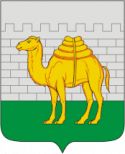| Chelyabinsk | Settelments of Chelyabinsk region | |


|
Year of foundation – 1736
Chelyabinsk is the largest industrial, cultural and scientific center of the South Ural. Chelyabinsk appeared as a military fortress on September 13 (2), 1736 during the Russian colonization of the South Ural. It was a watch fortress on the way to Orenburg, which was under construction at that time. It gained its city status in 1781 and in 1934 it became the center of the Chelyabinsk region. Today it is a city-millionaire: about 1150000 people live there, it is almost one third of the region’s population. The city is situated on the eastern slope of the Ural mountains, on the river Miass (the Iset tributary). It has the geographical coordinates: in longitude 61°08"-61°17" east and latitude 55°03"-55°19" north. From west and north it is edged by pine-forests. The city’s relief is slightly hilly in the west with the gradual descent to the east; it is also “cut” by the valley of the Miass river and narrows with lakes and bogs. The Miass banks are covered by forest and bushes here and there. The river passes the Shershni reservoir on the south-east of the city. The city is also surrounded by other reservoirs: the Pervoe lake in the north-east, the Smolino and Sineglazovo lakes in the south. The lakes are covered with ice from the beginning of November till the middle of April. By the end of winter it becomes 80 cm thick. Forests and groves surrounding the city are mixed, usually pine and birch. There are seven institutes of higher education in the city: South Ural state university, Chelyabinsk state university, Agro-engineering and Pedagogical universities, medical academy, academy of culture and arts, institute of physical education. More than 35 thousand students study in these institutes. There are also 169 schools, colleges and lyceums, 14 musical and arts schools. The Chelyabinsk residents have the possibility to go to 5 state and 4 municipal theaters, picture gallery, philharmonic society, organ hall, circus, several museums, 19 cinemas. There are also a municipal jazz center, modern arts center, several TV and radio companies. The Chelyabinsk railway station is one of the most convenient and comfortable ones in Russia. The area of its halls and other rooms is 16800 sq. km. The station can host 4900 people at the same time. It suggests more than 100 services. The first passenger plain landed in Chelyabinsk in summer of 1932. The airport was then in the north-western outskirts of the city. The volume of air transportations demanded a new airport. It received the first airplanes in 1954. In July 1994 the air enterprise was reorganized into the joint stock company, and the Chelyabinsk airport gained the international status. Residents and guests of the Chelyabinsk region are connected by the routs of the Chelyabinsk air enterprise with 50 cities of the Russian Federation and the nearest foreign countries. There are an international sector and a modern landing strip which help to receive all kinds of air ships practically in all weather conditions. Chelyabinsk has a well worked out communication sector within the city as well as with the rest of the world. There are 70 postal telegraph services. Chelybinsk is one of the Russian cities with the biggest quantity of telephone numbers (about 270000). It is the leader among the Ural and Siberian cities. In 1996 a telephone line connecting Chelyabinsk with Moscow was set. It gave wonderful new opportunities of the connection with the whole world. Chelyabinsk is connected by automatic communications sources with most large cities in Russia and also with many foreign countries and continents.
Cities economyThe leading branches of industry are ferrous metallurgy, machine-building and metal-working, power industry, non-ferrous metallurgy, food, flour-and-cereals and mixed fodder industries, industry of building materials. In 2001 industry comprised 76,2%, agriculture – 0,2%, building – 3,4%, transport and communications – 13,4%, trade and public catering – 1,1% in the structure of production. The largest enterprises: metallurgical and electro metallurgical industrial complexes, tractor, and clock-producing plants, plant of metal constructions, “Thermodevices”, “Anker”. There are also enterprises of machine-building, chemical, building, light and food industries.
| |




